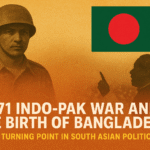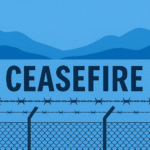India’s Foreign Policy
Foreign policy is the framework through which a nation engages with the rest of the world. It reflects a country’s national interests, values, and objectives and dictates how it interacts with other countries and international institutions. Broadly, foreign policy encompasses diplomacy, economic engagement, defense cooperation, cultural exchanges, and strategic alliances. It is both a tool for promoting peace and a mechanism for safeguarding national security.
In the 21st century, foreign policy is no longer just about managing bilateral ties or participating in multilateral forums. It has become a dynamic instrument shaped by global challenges such as terrorism, climate change, technological disruption, and shifting power centers. Against this backdrop, India—one of the world’s largest democracies and emerging economic powers—has significantly transformed its foreign policy approach.
This article explores India’s foreign policy evolution in the 21st century, examining its shift from soft power reliance to the strategic assertion of national interests. It also considers how India is redefining its global identity while navigating the complex terrain of international relations.
I. India’s Foreign Policy: A Historical Overview
India’s foreign policy since independence in 1947 was initially shaped by its colonial experience, non-alignment ideals, and a moralistic worldview.
- Nehruvian Diplomacy: Under Prime Minister Jawaharlal Nehru, India championed the Non-Aligned Movement (NAM), refusing to align with either the US-led Western bloc or the Soviet bloc during the Cold War. Nehru emphasized moral leadership, global peace, and anti-colonial solidarity.
- Strategic Restraint: India’s early foreign policy was marked by a reluctance to use military power except in self-defense (e.g., the 1962 war with China and wars with Pakistan in 1965 and 1971). India maintained a limited global role and focused primarily on regional issues.
- Economic Isolation: Until 1991, India followed a relatively protectionist economic policy. Its limited integration with the global economy constrained its foreign policy ambitions.
While this approach helped preserve India’s sovereignty and autonomy, it often led to passive diplomacy and limited influence on global affairs.
II. Post-Cold War Transition: The Opening Up
The collapse of the Soviet Union and the economic crisis of 1991 were pivotal. India was forced to liberalize its economy and rethink its global strategy.
- Economic Diplomacy: Liberalization led to increased engagement with Western countries, trade partners, and multinational institutions. India began to leverage economic interests to shape foreign relations.
- Look East Policy: Initiated in the 1990s, this policy aimed at strengthening ties with ASEAN countries to counterbalance China and diversify trade and security partnerships.
- Strategic Autonomy Revisited: While continuing to uphold strategic independence, India started forming issue-based alignments, such as closer defense cooperation with the United States and Israel.
This period laid the groundwork for a more pragmatic, interest-driven foreign policy.
III. Foreign Policy in the 21st Century: A New Era
With the advent of the 21st century, India’s foreign policy began to evolve in response to globalization, regional rivalries, and the need for a stronger international role.
1. Global Aspirations and Rising Influence
India’s growing economy, demographic advantage, and technological capabilities positioned it as an emerging power. Successive governments—particularly under Prime Ministers Atal Bihari Vajpayee, Manmohan Singh, and Narendra Modi—have sought to expand India’s global footprint.
- United Nations Reforms: India has consistently lobbied for permanent membership in the UN Security Council, reflecting its desire for a seat at the global high table.
- G20 Leadership: India’s active participation in the G20 reflects its growing economic importance. In 2023, India assumed the G20 presidency, projecting itself as a voice of the Global South.
- Climate Diplomacy: India has emerged as a key player in global climate negotiations, advocating for climate justice and equitable development.
2. Multialignment: India’s Strategic Balancing Act
Rather than aligning with a single power bloc, India has adopted a strategy of “multialignment”—engaging with multiple powers simultaneously.
- United States: Defense cooperation, trade, counterterrorism, and the Indo-Pacific strategy have brought India and the US closer.
- Russia: Despite US-India closeness, India maintains defense and energy ties with Russia, especially in the backdrop of the Ukraine war.
- China: Relations remain complex—marked by trade interdependence and military tensions (e.g., Doklam, Galwan). India counters China’s influence through QUAD and regional alliances.
- Middle East: India has deepened ties with Gulf countries for energy security, diaspora welfare, and economic cooperation, while maintaining neutrality in regional rivalries.
This nuanced diplomacy reflects India’s desire to remain independent yet engaged in a multipolar world.
IV. From Soft Power to Hard Power: A Strategic Shift
India’s foreign policy was once primarily characterized by soft power—cultural diplomacy, moral leadership, non-violence, and yoga diplomacy. While these elements remain important, India is now complementing them with hard power and realpolitik.
A. Soft Power Pillars
- Diaspora Diplomacy: With over 30 million Indians living abroad, India uses its diaspora for economic, cultural, and political leverage.
- Cultural Exports: Bollywood, yoga, Ayurveda, and Indian cuisine enhance India’s global image.
- Development Aid: India provides technical and financial aid to neighboring countries and African states, building goodwill and influence.
B. Rise of Hard Power
- Military Modernization: India is enhancing its defense capabilities through indigenous manufacturing (e.g., BrahMos, Tejas) and global procurements (e.g., Rafale, S-400).
- Border Assertiveness: India has adopted a firmer stance on territorial issues with China and Pakistan. Surgical strikes (2016) and the Balakot airstrike (2019) signal a more proactive approach.
- QUAD and Indo-Pacific: India’s participation in QUAD (with the US, Japan, and Australia) aims to ensure a rules-based Indo-Pacific, countering Chinese aggression.
- Space and Cyber Capabilities: India’s space missions (e.g., Chandrayaan, Gaganyaan) and cybersecurity initiatives reflect hard power in new domains.
This balanced approach indicates a maturity in Indian foreign policy—where cultural appeal is backed by credible power projection.
V. Regional Dynamics: South Asia and Beyond
India’s foreign policy continues to prioritize its immediate neighborhood while seeking greater global influence.
A. Neighborhood First Policy
India has sought to lead South Asia through connectivity, infrastructure development, and crisis assistance.
- Nepal, Bhutan, and Bangladesh: Relations have generally improved through trade and energy cooperation.
- Sri Lanka and Maldives: India has offered financial aid and development support while competing with China’s influence.
- Pakistan: Relations remain tense, largely due to terrorism and Kashmir. India’s approach has shifted from engagement to containment.
B. Act East and Indo-Pacific Strategy
The “Act East” policy, which evolved from the Look East policy, aims to boost economic and security ties with Southeast Asia and beyond.
- ASEAN Engagement: India is strengthening maritime and economic cooperation with ASEAN countries.
- Japan and Australia: Deepening ties with these democracies reflects India’s regional pivot.
- Maritime Security: India’s naval presence in the Indian Ocean signals a growing maritime assertiveness.
VI. Indian Foreign Policy Under Prime Minister Narendra Modi
Since taking office in 2014, Prime Minister Modi has brought a new dynamism to Indian diplomacy.
- Personal Diplomacy: Modi’s frequent global visits and high-profile summits have raised India’s diplomatic visibility.
- Vaccine Diplomacy: During COVID-19, India supplied vaccines to over 90 countries, projecting itself as a responsible power.
- Digital Diplomacy: India leverages digital platforms to engage with global audiences and diaspora communities.
- Bharat First Approach: Modi’s foreign policy emphasizes national interest, self-reliance, and assertive engagement—a marked shift from earlier reticence.
VII. Challenges and Constraints
Despite its growing global role, India’s foreign policy faces several challenges:
- China’s Rise: Border tensions, trade imbalance, and regional competition test India’s strategic autonomy.
- Dependence on Energy Imports: Reliance on Middle Eastern oil and gas makes India vulnerable to geopolitical shifts.
- Geopolitical Volatility: Russia-Ukraine war, US-China rivalry, and instability in Afghanistan impact India’s external environment.
- Internal Divisions: Critics argue that domestic polarization and human rights concerns may affect India’s soft power and diplomatic credibility.
- Institutional Bottlenecks: Limited diplomatic capacity and bureaucratic inefficiencies hinder agile foreign policy execution.
Addressing these constraints will be crucial for realizing India’s foreign policy potential at fullest.
VIII. The Way Forward: Strategic Recommendations
India’s foreign policy in the coming decades must align national aspirations with global responsibilities.
- Deepen Multilateral Engagement: India must continue to lead on global issues like climate change, health equity, and digital governance.
- Strengthen Defense Diplomacy: Greater focus on military alliances, joint exercises, and defense exports can enhance deterrence.
- Promote Strategic Narratives: Investing in think tanks, media outreach, and public diplomacy can project India’s global vision.
- Diversify Trade Partnerships: Strengthening ties with Africa, Latin America, and Southeast Asia will reduce dependency on major powers.
- Champion the Global South: As a bridge between developed and developing nations, India can become a voice for equitable global governance.
Conclusion
India’s foreign policy in the 21st century reflects a significant departure from its post-independence idealism and strategic passivity. It has evolved into a sophisticated blend of values-driven diplomacy and pragmatic realism. The transition from soft power to strategic assertiveness signals India’s readiness to play a decisive role in shaping global affairs.
In a world marked by uncertainty, shifting alliances, and emerging threats, India’s balanced, multi-layered foreign policy approach offers a model for other democracies seeking to maintain sovereignty without isolation. As India continues to rise, its foreign policy will not only define its future but will also shape the contours of the international order in the decades to come.





